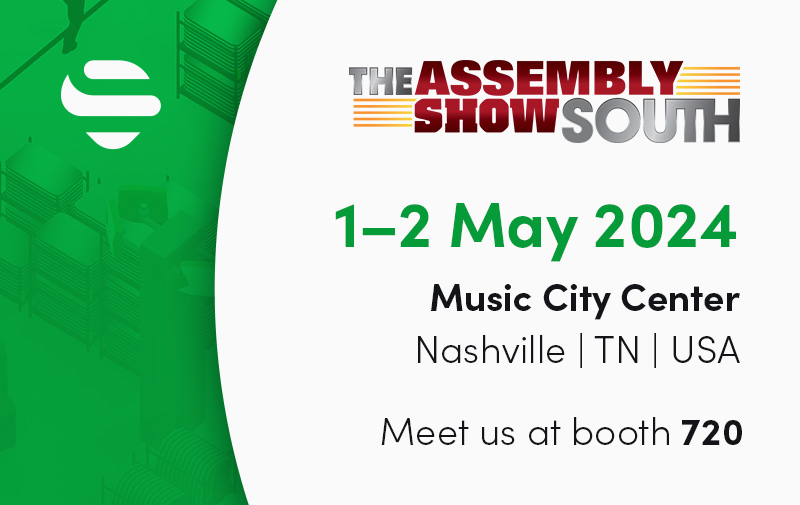
L2 Training updated: Smooth Project Delivery at Your Fingertips
By Ivo Stastny | December 15th, 2021 | 5 min read
Understanding the RTLS System requirements and general rules is the key to successful project delivery, especially for a new partner. To help them succeed in their digitalization projects we designed a complex Sewio UWB RTLS training, which is accessible online and is free for all of our partners.
Sewio RTLS System is made for industrial environments, which are usually complex. So, to be able to deliver suitable accuracy (50 cm or better) one needs to keep several rules in mind.
We Have Created Content-rich Presentations with Voice-overs for You
All aspects of the project delivery phase are covered in the L2 Training, which is divided into several modules consisting of videos with voice-overs for better understanding. The best thing about this is that you can learn at your own pace – not only can you pause and resume the videos at any time, but the training is accessible 24/7, so you can also pick the time to learn that suits you best!
We are glad to announce that the L2 Training is now updated and includes several new modules:
- Tag Deployment Rules: Placement Matters
- Anchor Deployment Rules: Think of Synchronization, Think Square
- 1D Deployment Rules: Emphasis the rules
- Site Survey: Understand the Environment
- RTLS Kit Deployment: Your First RTLS System Deployment
- RTLS Planner & Plan Approval Process: Installation Made Simpler
Tag Deployment Rules: Placement Matters
This module helps you get answers to the following questions:
- Do you realize that a wrong tag placement can cost you up to a day of time in the tuning phase?
- Do you know how long the battery lasts and how often it will be necessary to re-change it?
- Can you define the maximum number of tags within one localization cell?
- Do you know what tag type is the best for your use case?
UWB Tag Leonardo product line provides three types of tags: Asset, Personal, and Vehicle. Each tag type has its own specifics regarding deployment and configuration. The module “Tag Deployment Rules” helps you understand those.
Correct tag placement on a forklift.
Anchor Deployment Rules: Think of Synchronization, Think in Squares
RTLS System depends on synchronization more than you probably think. If the anchors are not correctly synchronized, no positions can be calculated. Therefore, correct deployment with a line of sight, together with the square geometry of the localization cell, is crucial.
Sewio delivers two types of anchors: Vista Omni and Vista DirectFive. Each anchor has a different antenna, and its radiation pattern requires a different approach to deployment and installation.




An overview of correct and incorrect anchor placements.
1D Deployment Rules: Emphasis on the rules
Unlike 2D location, 1D location relies only on two anchors. As you can imagine, the emphasis on rules needs to be even stronger in this case.
Did you know that 1D location is only possible with DirectFive UWB anchors? And do you know why? What are the possible use cases and what environments are not suitable for 1D location? Do you know what a Fresnel zone is? Do you know how to calculate the anchor’s vertical tilt?
You always need to think about the balance between keeping suitable synchronization and being able to receive all blinks.

Explanation of the optimal anchor’s vertical tilt.
Site Survey: Understand the Environment
Do you know that a site survey is the most important part of the project delivery phase?
The design of your project is based entirely on the details from the site survey. To make the right design and place anchors correctly, you need to know not only the environment but also how the processes in the area are set.
You need to keep in mind all the deployment rules related to anchors and tags. Because proper site surveys and related design save time and trouble during system commissioning. And most importantly, help you keep the costs down by preventing unplanned anchor deployment updates.

Site survey is the key to a successful project delivery phase.
RTLS Kit Deployment: Your First RTLS System Deployment
Is the Sewio RTLS System new to you? Do not worry, the module “RTLS kit deployment” explains all the required steps to make your RTLS kit work in your office. You will be guided through anchor Omni deployment, AP router configuration, RTLS Studio installation, and initial steps in RTLS Manager and Sensmap.

User-friendly deployment of the RTLS kit thanks to our guided installation.
RTLS Planner & Plan Approval Process: Make the Installation Simple
Create the environment, add all obstacles, place anchors, and see what the coverage is.
RTLS Planner is a great tool and very useful in the project delivery phase. It saves time in communication with a customer during the pre-sale phase as well as with the installation company during the installation phase.
The module RTLS Planner explains how to use RTLS Planner and gives you guidelines on how to get Plan Approval.

Overview of anchor placements in RTLS Planner.
How to Take This Training
The training is free for all Sewio partners and their employees and can be accessed via the Online Training section of our Partner Portal. Not a partner, but still willing to learn and deliver the latest UWB RTLS technology to your customers? Become a member of our RTLS eco-system!




